The imperial Library and the Dawn of Japanese Children’s Book
Although the exhibition ended a few days before I wrote this article, I visited the International Library of Children’s Literature in Ueno in May for an exhibition titled “The imperial Library and the Dawn of Japanese Children’s Book". (The exhibition ran from March 26 to June 23, 2024.)
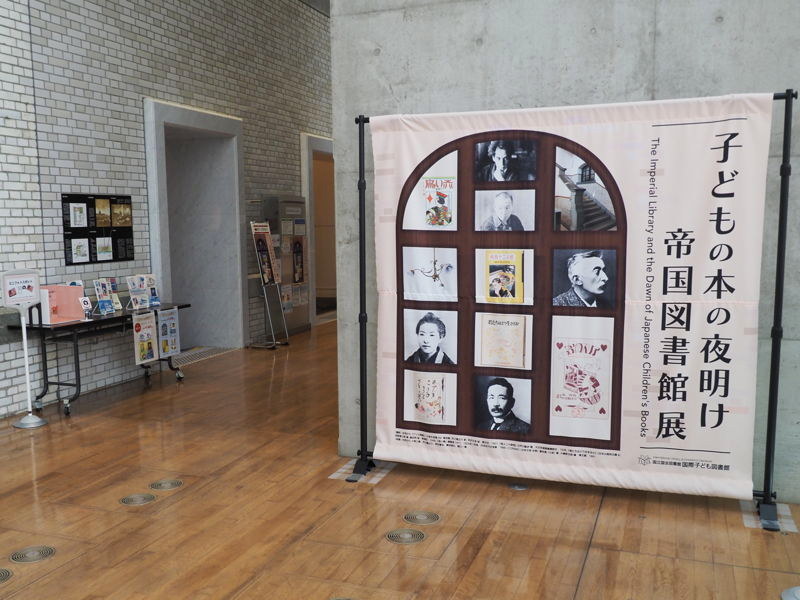
The Library building was originally built in 1906 as the Imperial Library and expanded in 1928-29. The completion of the building, including the attached building, was in 1930, and the dedication ceremony was held on March 15, 1930.
In 1949, the library was renamed the National Library Branch Ueno Library, and in 2000 it became the Library of Children’s Literature.
The exhibition contrasted the history of the Imperial Library with the history of children’s books.
During the exhibition period, visitors were allowed to take pictures of the book museum (some parts are prohibited), hall, grand staircase, and corridors, which attracted me to visit.
In this article, I will only write about the building.
The book museum is on the third floor. This room used to be a reading room when it was built.
The room has two cylindrical walls like this, and both sides (inside and outside) of each cylinder are used for exhibits.
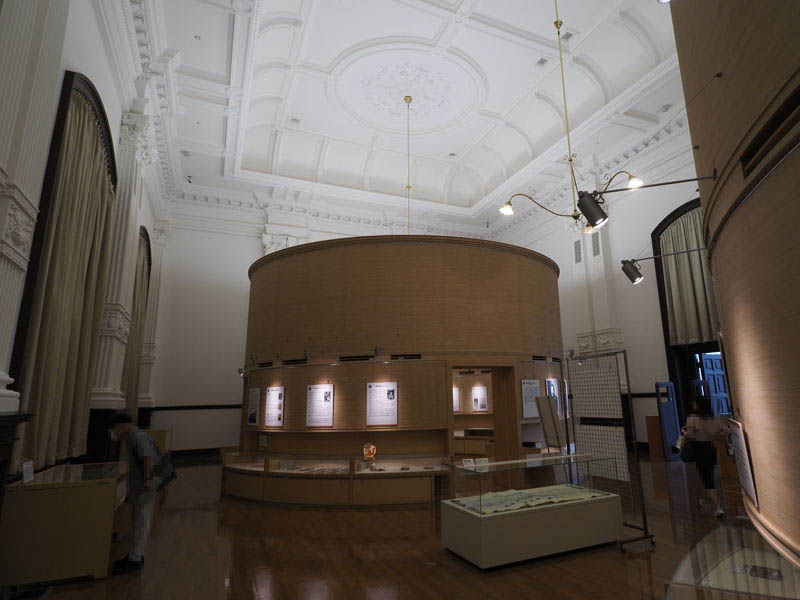
This is the entrance door to the reading room built in 1906. It is now closed to people. The brass plate on the door reads “Osu to Aku" (push to open).

Some explanation plates about the library building were also on display.
According to the explanation, the Imperial Library was a fee-charging facility open only to those 15 years of age or older (the age limit was raised to 20 or older in 1941), and users were required to purchase a reading ticket at the entrance.
According to the “Guide of the Imperial Library" of 1901, a “special ticket" cost 5 sen for one visit and 30 sen for 10 visits. The “ordinary ticket" was 2.00 for one visit, and 12.00 for 10 visits. (* 100 sen = 1 yen)
The “special ticket" allowed the holder to use a special reading room on the second floor and to borrow a larger number of books.
In the “Guide of the Imperial Library" of 1912, it seems that “privilege ticket" was also added.
The regular one-time ticket (10 sheets) and the privilege ticket were displayed at the exhibition hall.
The admission fee to the Ueno Zoo at that time was 5 sen for adults and 3 sen for children. (as of 1907).
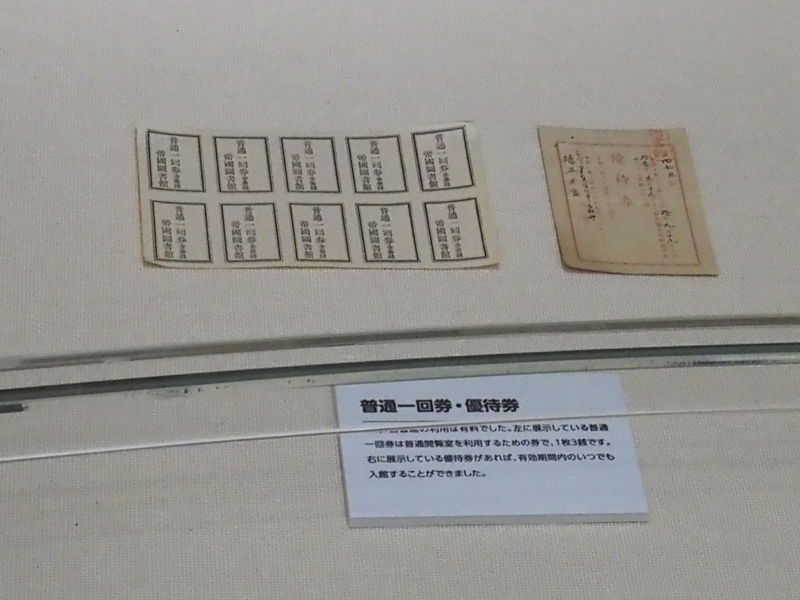
The number of people entering the library was limited by the number of seats in the reading room, so they had to wait their turn at the entrance if the room was full.
The room we are currently in was the “regular reading room" on the third floor, and only men could use it. Women used the “Women’s Reading Room" on the second floor.
The ceiling looking up from inside the cylinder.
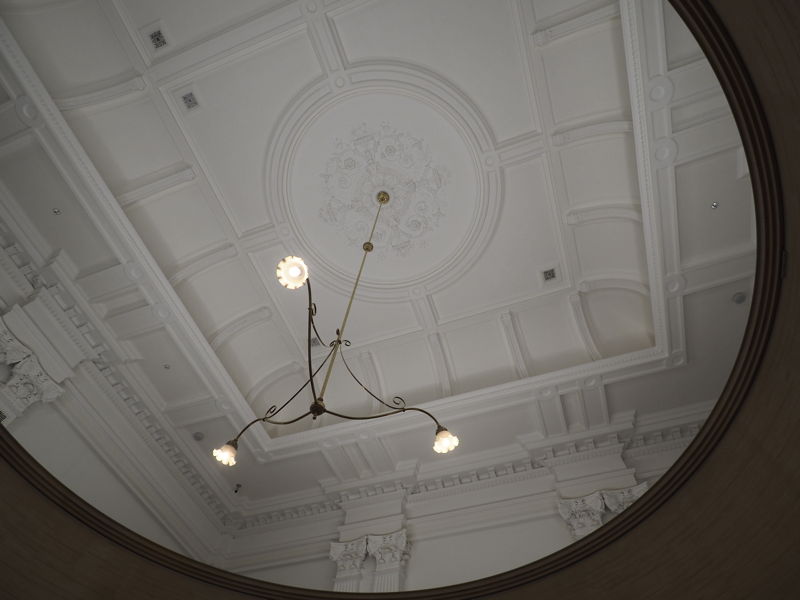
This room is approximately 26m long and 13m wide with a ceiling height of 9m. The ceiling and walls are decorated with plaster to create a three-dimensional effect. The chandelier was restored from one used in the Meiji period based on photograph and other sources.
This is the wall opposite the entrance. It is called “aedicule" meaning a small temple. I had never heard of this term, but it is said to refer to the technique of enclosing both sides of an opening such as a door or window with columns and the upper part with a pediment.

The lower part of the aedicule looks like this. The right side is a door leading to the stack room, and the left side opens to reveal a brick wall. This is the only place where the brick wall in the Meiji era can be seen today.
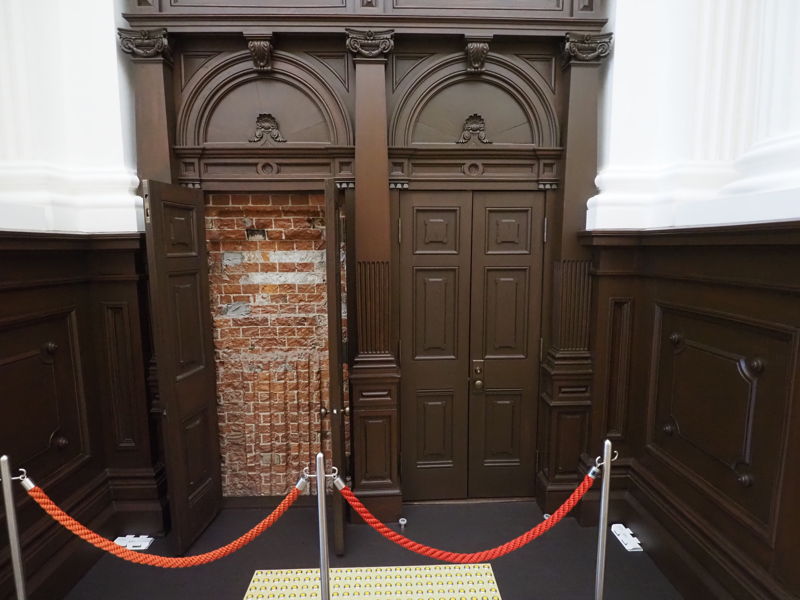
A photos taken in the Showa period shows that a distribution board was installed on top of the brick wall. The brick wall can be seen now that the distribution board has been removed.
There are two columns on each side of the aedicule.
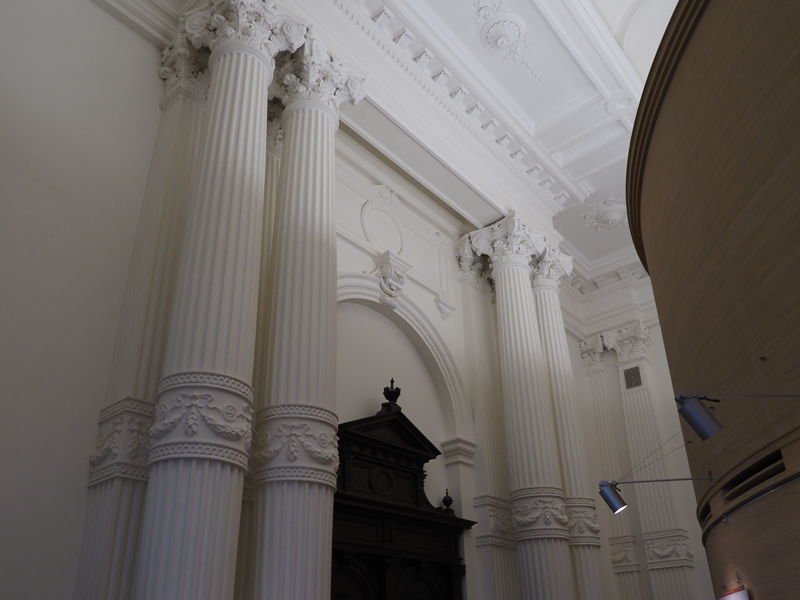
As I walked out into the hallway, I found an explanatory panel on the wall.
There was also a photo of the building when it was used as a reading room, so I enlarged a portion of it. They used this photo as a reference for restoring the chandelier.
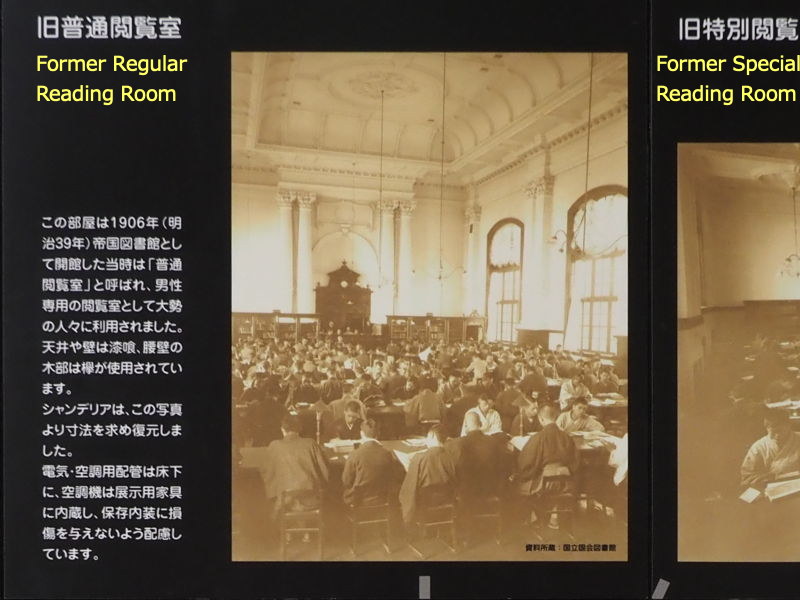
This is the hall on the third floor. This is the part that was added in 1928. This room also was a reading room at that time.
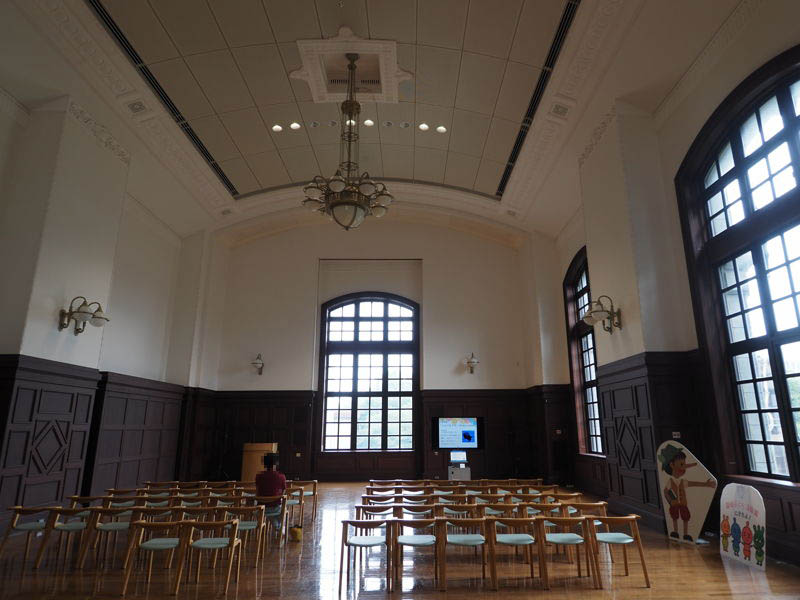
The display in one corner of the hallway.
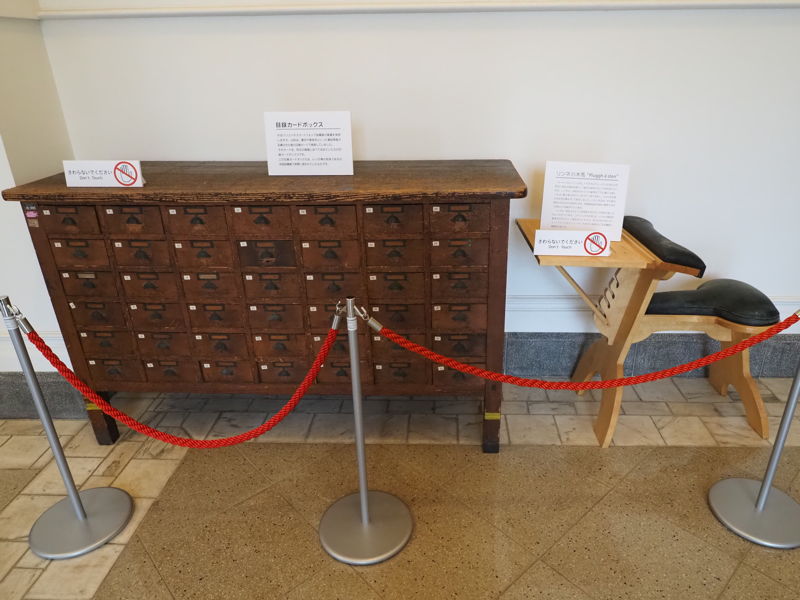
On the left is the catalog card box. It was explained that before computers made it possible to search the library’s collection, books were managed using cards. I feel nostalgic because I used to use this card when I was young. It was actually used in the Imperial Library.
On the right side was an explanation of “Linnaes’ wooden horse" (Plugghästen). It was apparently a replica of the desk and chair that botanist Linnaeus used when he wrote. When we sit on the black saddle, the board on the left side becomes a desk. The angle of the desk seems to be changeable. It was donated by the Swedish ambassador in 2014.
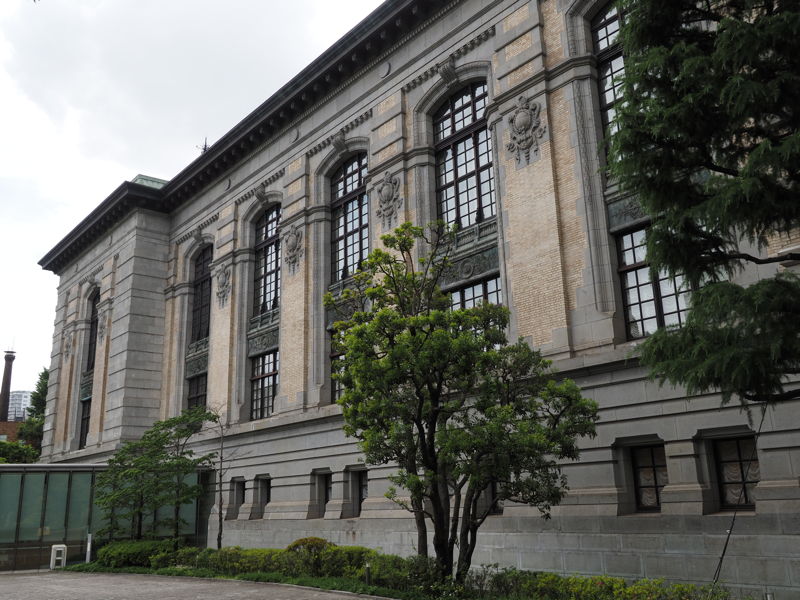
The International Library of Children’s Literature offers a library tour for parents and children every Thursday during the summer vacation. It seems to be a popular event, though, and registration is already closed.
Also, outside of the summer vacation period, the library offers guided tours for the general public on weekday Tuesdays and Thursdays in the afternoon. This too requires advance registration.
[Related article]
“The building of the International Library of Children’s Literature" (2019.09.03)
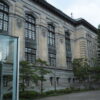
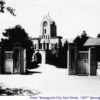
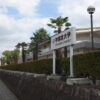

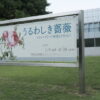
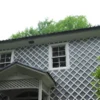
Discussion
New Comments
No comments yet. Be the first one!